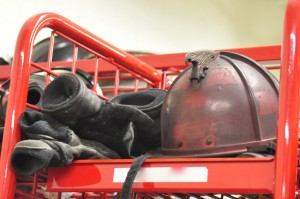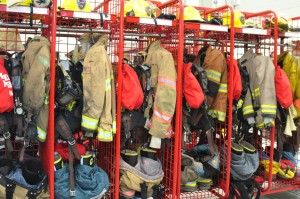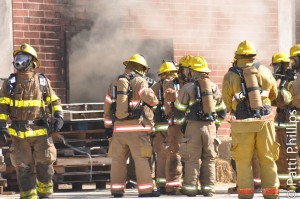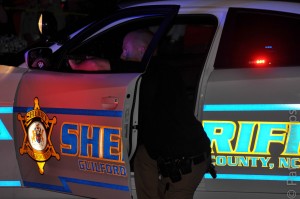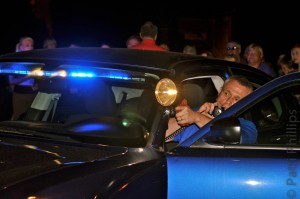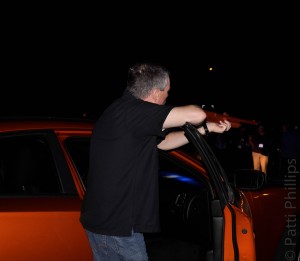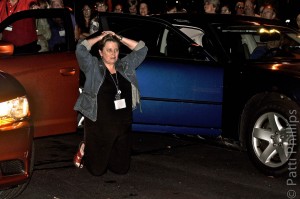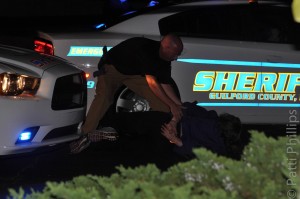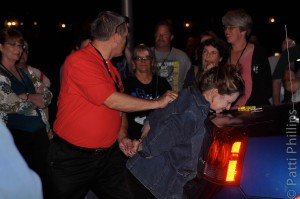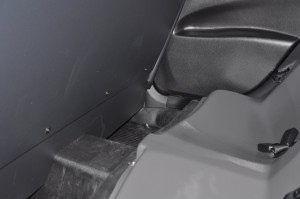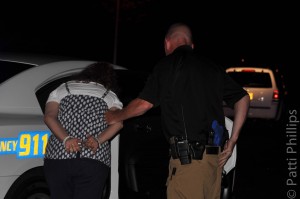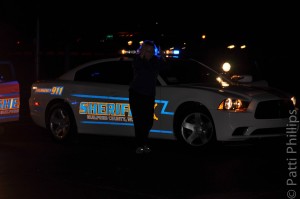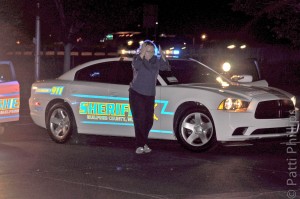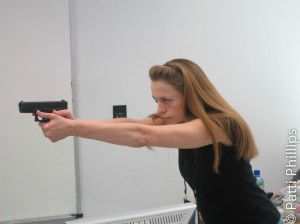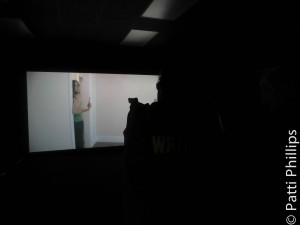KN, p. 118 “How do you become a firefighter?”
I have several pals around the country who are firefighters. Some put out wildfires, some work in rural areas, others in big cities. A couple of them helped out during and after September 11th. Firefighters have a dangerous job and a whole lot of guts. No doubt about it. They save lives, they help people, they serve the community in countless ways. Yet, many civilians assume that the job is just about putting out the flames. In most towns, there is much more to it. Their duties can include:
- responding to requests for help
- putting out fires
- assisting at highway accidents
- rescuing people during floods or other natural disasters
- rendering safe any bombs
- rescuing trapped people and animals
And, after they do all that, firefighters are usually responsible for the cleanup and checking the incident site afterward.
One of the first ways children meet firefighters is in school. Each year in October (National Fire Prevention Month in the USA) firefighters educate the community by visiting schools and public venues, demonstrating how to avoid getting hurt during a fire. “Stop, Drop & Roll” is taught everywhere, so that children will know what to do if they smell smoke in their own homes. In communities where wildfires are an unfortunate fact of life, wildfire preparedness is taught, with a focus on how to protect the house year-round and what to do when it’s time to evacuate.
Sound like a career you’d like to have? Read on to discover the job requirements. It’s a competitive field and not for everyone, but it is highly rewarding for the guys and gals who qualify.
You must be 18 and have a High School diploma. Beyond that?
Education
- Because of the changing demands on firefighters, many fire departments now ask that applicants complete some kind of coursework beyond high school.
- Some departments (generally in larger cities) even require a full bachelor or associate’s degree in fire science or fire engineering.
Most potential firefighters will then have to undergo five areas of testing in order to determine readiness for training:
Testing for Firefighter Qualification:
Written Exam – 150 to 200 multiple choice questions including reading comprehension, math, judgment, listening comprehension, oral & written communication, etc.
Physical Agility – the various parts of this test simulate situations a firefighter would encounter on the job and depending on the town/city, all must be completed in under ten minutes (in some cases as little as seven minutes)
- Hose drag – in general, 200 feet of hose line is dragged at least 75 feet while walking or running upright, and then perhaps dragged an additional distance after dropping to one knee
- Stair Climb – a set number of stairs is climbed while wearing or carrying equipment
- Equipment Carry – some versions of the test require hauling equipment through a second story window via rope; others require carrying equipment for 75 feet while walking on the ground.
- Ladder Raise – those tall ladders have extensions that must be managed and adjusted while several feet off the ground.
- Forcible Entry – using a sledgehammer, the applicant has to hit and move a device a certain distance in order to demonstrate an ability to use force when smashing through a wall, etc.
- Search – the applicant has to crawl through a tunnel maze with right angles and limited visibility – about 3’x4’ in some spots, smaller in others
- Rescue – a full-sized dummy (about 165 pounds) must be dragged 75 feet in one direction and then 75 feet back.
- Ceiling Breach – tools are used to poke and pull at a hole in a ceiling – sometimes including a sixty pound door.
This video from Cuyahoga Community College demonstrates some of the challenges to be met:
http://www.youtube.com/watch?v=Tvwp2r2BzdE&feature=youtu.be
If the applicant fails the physical part of the test, he/she is typically allowed to sign up for a later attempt, usually after several months.
Other sections of the test battery include:
Medical Exam – thorough checkup, plus drug testing
Psychological Exam – are you psychologically suited for the job – are you afraid of dark, tight spaces? Do you work well in teams? Can you take orders? Why do you want to work in such a dangerous field?
Oral Interview (pass/fail section of testing)
Possible questions might include: Why do you want to be a firefighter? What are your strengths/weaknesses? What is the job? Are you qualified? Why should we hire you?
After passing all five areas, the applicant will be permitted to apply to a fire academy and/or fire department for the training program.
Some towns are set up to allow for on-the-job training after the testing is complete. The applicants become candidates at the firehouse and complete their training with the firefighters they will be working with, but most towns require attendance at a formal program before this step.
Training Program
- A several weeks/months long training program must be completed at a fire department or academy.
- Recruits learn about hazardous materials control
- Recruits learn emergency medical procedures, including CPR.
- Local building codes are taught
- Firefighting techniques are practiced, including handling axes, ladders, chainsaws, fire hoses and fire extinguishers.
Additional information at www.fireprep.com
Think you’d like to know more? Call for an appointment at your local firehouse to drop in and introduce yourself. Chances are, if the guys have the time, they’ll chew your ear off with stories of calls they’ve gone out on. The job is not like what you see on “Chicago Fire.” Fun show, but not realistic. Ask a pro.
*Photos by Patti Phillips
KN, p. 118 “How do you become a firefighter?” Read More »

